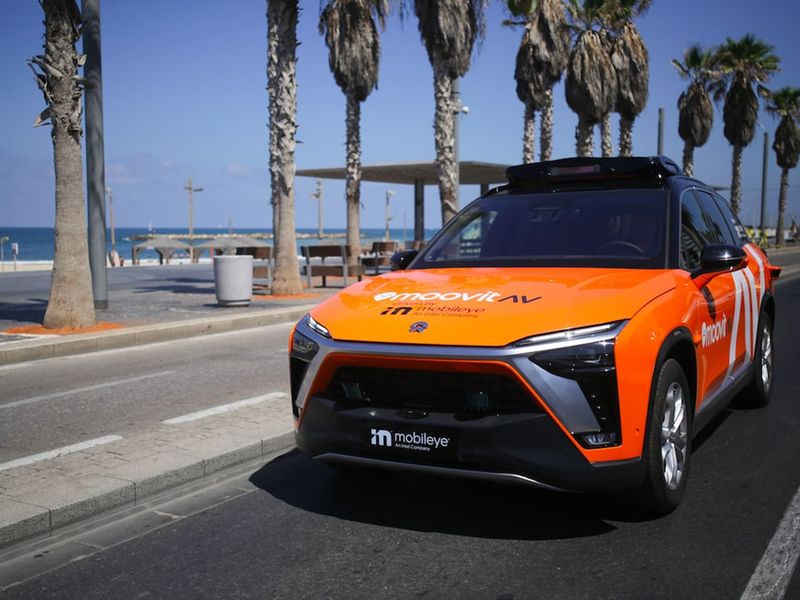
Few companies have professed more sweeping ambitions in the automated-driving technology realm than Intel Corp. and its Mobileye subsidiary.
Now Mobileye has added fresh updates to long-standing blueprints that have included everything from engineering advanced driver-assist systems to purchasing a consumer-facing transit app to developing its own lidar sensors, and much more.
At IAA in Munich, the company unveiled the six-passenger, electric autonomous vehicle that it will use for driverless ride-hailing service, slated to start next year in Tel Aviv and Munich.
Service in Munich will be run in conjunction with a new partner, rental-car company Sixt SE, the companies said Tuesday. Mobileye will own the vehicles while Sixt handles ongoing maintenance and operations. The vehicles arise from Mobileye’s partnership with Chinese electric vehicle maker Nio.
They will operate under the Sixt and “MoovitAV” banners, the latter being an updated version of the mobility-as-a-service and transit brand that Mobileye acquired for $900 million in May 2020. Working together, the two companies intend to start in Munich in mid-2022 and have “dozens” of vehicles on the road in 2023, says Mobileye CEO Amnon Shashua.
From those beginnings, they envision scaling robotaxi service across Europe by the end of the decade.
“The plan is around 50 vehicles without human safety drivers to start, then we’ll expand based on the regulatory landscape at the time outside of Germany,” Shashua said.
Elsewhere, that regulatory environment may be less welcoming. In June, Mobileye started testing self-driving vehicles in New York City. But Shashua said a proposed city permitting process for AV testing threatens the company’s prospects in the Big Apple. The permits remain under discussion.
“If those proposals are accepted, then there’s nothing to do in New York City,” he said. “We’ll have to stay elsewhere. … They want suppliers at the testing level – with a safety driver – to state that the system is as good as humans without creating any KPIs [key performance indicators] that one can relate to. It opens up a quagmire of issues.”
Separately at IAA, Mobileye revealed Monday a new partnership with German parts supplier Schaeffler. The two companies will jointly develop a skateboard that could be used to underpin future robotaxis and shuttles, and perhaps other vehicles containing Mobileye’s Level 4 automated system, known as Mobileye Drive.
Combined, the Sixt and Shaeffler announcements build upon the company’s portfolio of partnerships around planned autonomous transportation services. Previously, Mobileye had inked a deal with delivery service Udelv, and self-driving shuttle providers Transdev and Lohr.
That’s the self-driving side of Mobileye’s business equation. On the driver-assist front, the company already provides camera-based driver-assist features and chips to more than two dozen global automakers. Next month, an enhanced version of those systems called SuperVision is scheduled to enter production with Geely on its premium Zeekr electric SUVs. By 2025, Mobileye and Geely hope to offer conditional Level 4 automated systems in Zeekr vehicles.
For now, human beings remain behind the wheel and responsible for vehicle operations when SuperVision is enabled, but the system allows for hands-free driving and self-parking capabilities. It’s powered by two of Mobileye’s EyeQ5 systems on a chip and utilizes 11 cameras.
Shashua says with humans there to provide oversight, a camera-only system can work as an enhanced driver-assist system. When it comes to building a vehicle capable of self-driving operations – those in which humans have no role in driving – an additional Mobileye hardware subsystem comprised of nine lidar and six radars provides a cross-check of the camera system.
“We can power a full self-driving vehicle with only cameras, but we feel at this point in time, it’s not safe enough,” he said. “So in addition to computer vision, we build another layer to create redundancy. … That layer of redundancy gives us this additional robustness that we need in order to go and prove we’ll be much better than human statistics.”

